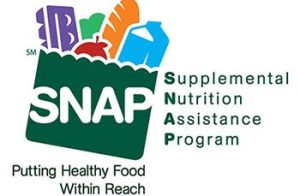<p>By: Tom Duffy, Senior Advisor, Nonfoods Community Development, FMI</p><div class="mg-image–circular" style="float:right;margin:10px;"><img sf-custom-thumbnail="true" src="https://www.fmi.org/images/default-source/blog-images/nonfoods-in-the-cart.jpg?sfvrsn=c49aebcf_1" sf-constrain-proportions="true" width="600" alt="Nonfoods" sf-size="100" /></div><p>Blending food and <a href="https://www.fmi.org/industry-topics/nonfoods">nonfoods</a> categories isn’t just a trend in today’s grocery market — it’s a smart strategy. As consumer preferences evolve, retailers can tap into new growth opportunities by fully leveraging their nonfoods offerings. When food and nonfoods items are strategically combined, they boost sales and transform the shopping experience to be more engaging and convenient. Seamless integration drives sales and builds customer loyalty, setting the stage for sustained growth.</p><p>One crucial insight for retailers is understanding the power of gateway categories within nonfoods. These categories — household essentials, general merchandise health and beauty products and pet care items — attract shoppers and serve as critical engagement points. They consistently drive foot traffic and encourage repeat purchases. When these items are strategically placed alongside food products, they enhance the shopping experience, leading to larger basket sizes and more frequent visits.</p><p>Optimizing nonfoods offerings requires a data-driven approach. Understanding which categories resonate most with your customers and how they interact with these products is key to refining your merchandising strategy. Tailoring assortments to meet the specific needs of your customer base ensures that your nonfoods categories complement your food offerings and elevate your store’s overall value.</p><p>The FMI Research and Insights team’s recent <em>Power of Nonfoods</em> study reveals that nonfoods are a significant opportunity for driving incremental growth in total store sales. The study emphasizes the frequency of nonfoods in consumer shopping habits and examines the factors influencing place of purchase. It defines the key factors of importance for consumers when grocery shopping, and demonstrates that consumers are engaged with, and rely on retailers to accommodate their needs. </p><p>Moreover, the study underscores the need for key gateway categories like household essentials, health and beauty, and pet care as critical in attracting customers and boosting profitability. By offering a well-curated selection of nonfoods products, you not only provide customers with a one-stop shopping experience but also differentiate your brand in a competitive market, fostering loyalty and opening new revenue streams.</p><p>To help retailers navigate this dynamic landscape, FMI is hosting two free <a href="https://www.fmi.org/events-education/digital-seminars">digital seminar series</a> focused on nonfoods. The two digital seminars will offer valuable insights into the latest trends, consumer behaviors and strategies for optimizing nonfoods offerings. Don’t miss this opportunity to unlock growth in your stores — register today and discover how to transform your nonfoods categories into powerful drivers of success.</p><p><a href="https://www.fmi.org/forms/meeting/Microsite/GatewaytoTotalStoreGrowth" class="button">Gateway to Total Store Growth</a></p><p><a href="https://www.fmi.org/forms/meeting/Microsite/NonfoodShoppingBehaviors" class="button-secondary">Exploring Nonfood Shopping Behaviors in Grocery Retail</a></p>
[#item_full_content]






